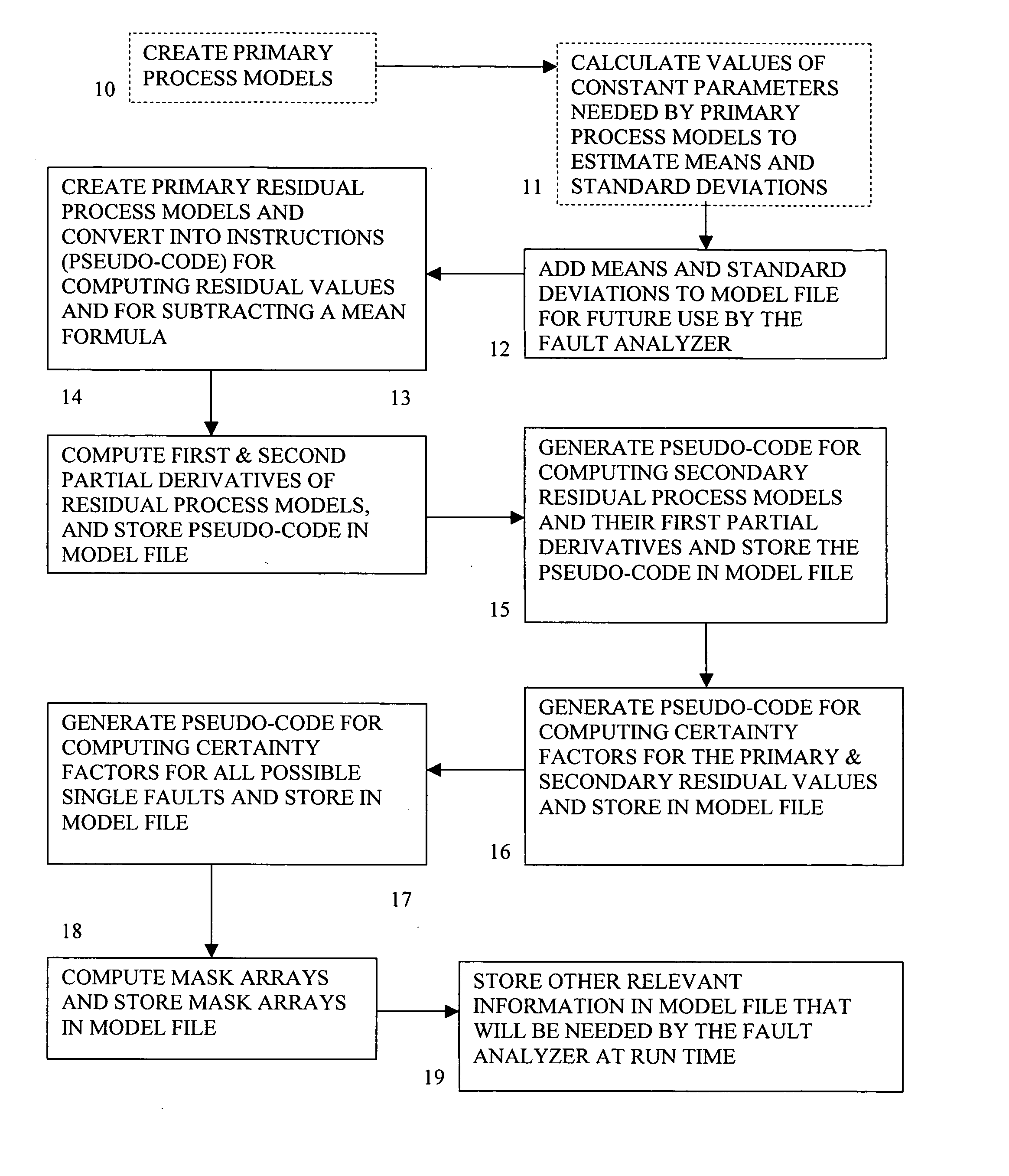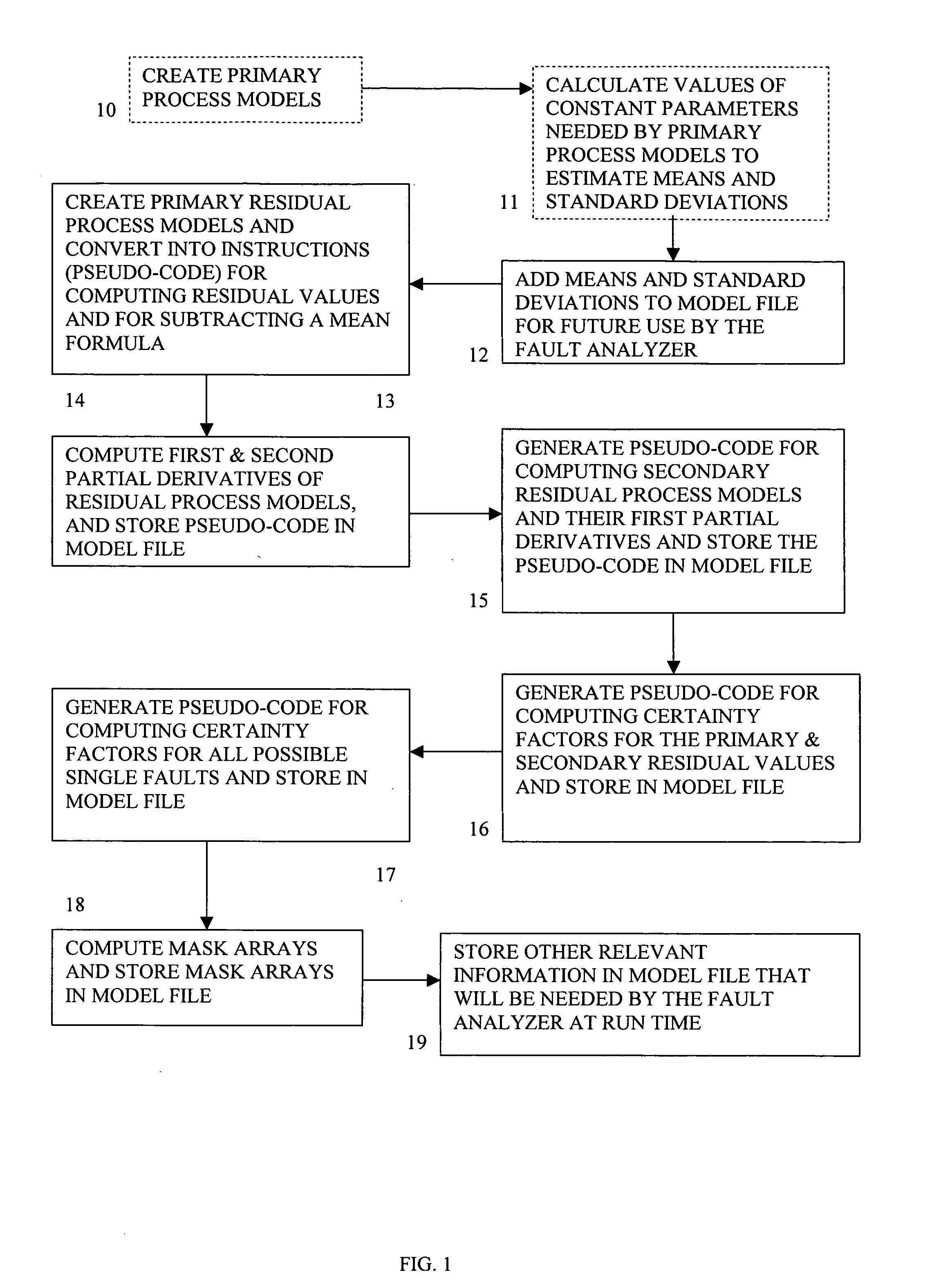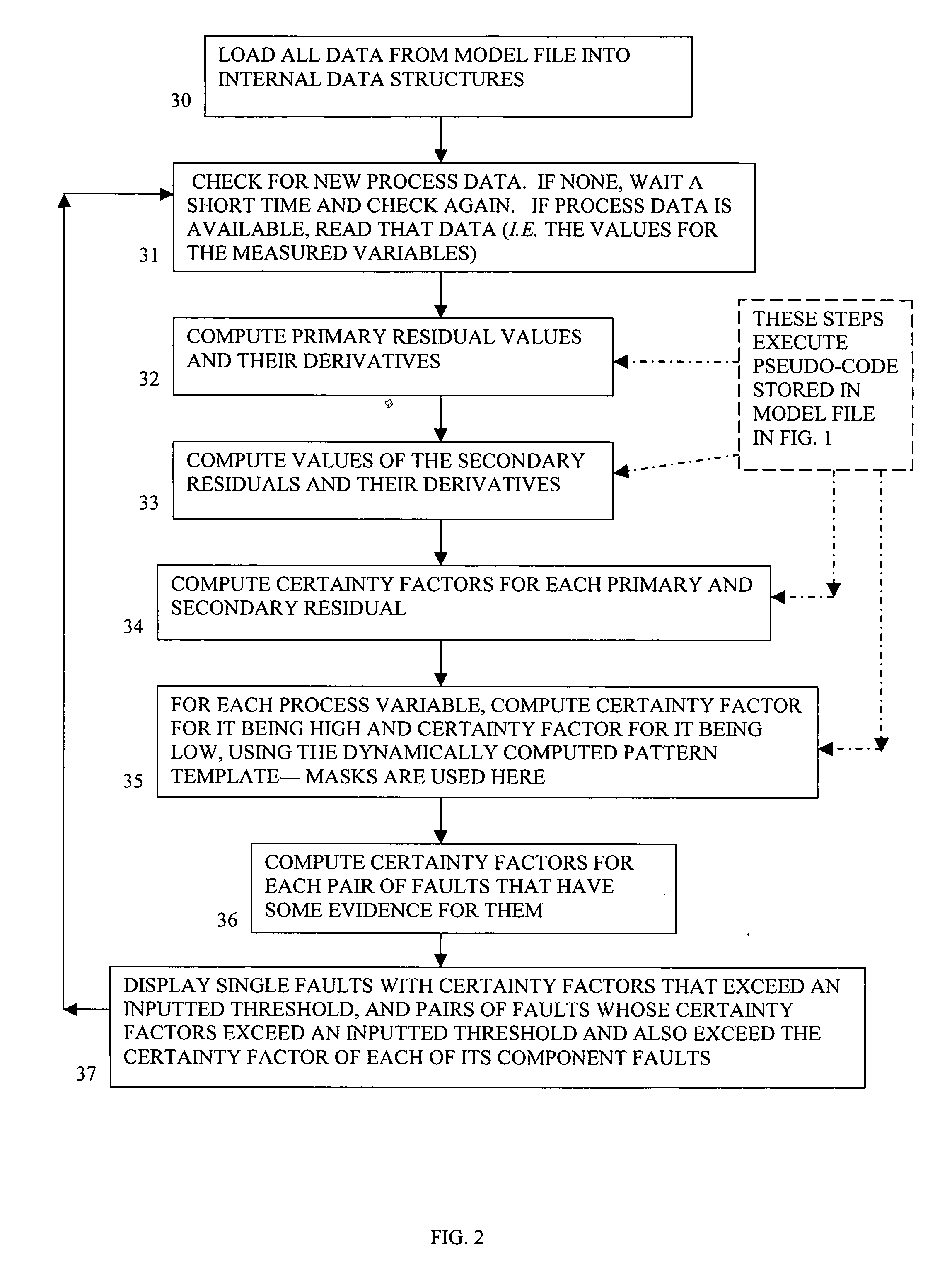Method and system of monitoring, sensor validation and predictive fault analysis
a fault analysis and sensor technology, applied in the field of fault analysis, can solve problems such as difficult for an end-user (such as a manufacturing engineer or other operator) to understand, maintain or even trust, models may not be robust enough to reliably predict or identify all abnormal or non-steady-state conditions, and may not be scalable to real fault conditions and only as good as the set of data provided. , to achieve the effect of reducing the amount of computer code, simplifying the creation and maintenance of softwar
- Summary
- Abstract
- Description
- Claims
- Application Information
AI Technical Summary
Benefits of technology
Problems solved by technology
Method used
Image
Examples
Embodiment Construction
[0017] At the outset, it should be clearly understood that like reference numerals are intended to identify the same elements, parts or portions consistently throughout the several drawing figures, as such elements, parts or portions may be further described or explained by the entire written specification, of which this detailed description is an integral part. Unless otherwise indicated, the drawings are intended to be read together with the specification, and are to be considered a portion of the entire written description of this invention.
[0018] The present invention provides an improved system and method for simultaneous real-time monitoring, sensor validation, optimization and / or predictive fault analysis in a process control system. A basic approach to sensor validation and fault analysis in the present invention is an examination of relationships between sensor values and the inference of possible sensor failures, or failures in other parts of a process, by, among other th...
PUM
 Login to View More
Login to View More Abstract
Description
Claims
Application Information
 Login to View More
Login to View More - R&D
- Intellectual Property
- Life Sciences
- Materials
- Tech Scout
- Unparalleled Data Quality
- Higher Quality Content
- 60% Fewer Hallucinations
Browse by: Latest US Patents, China's latest patents, Technical Efficacy Thesaurus, Application Domain, Technology Topic, Popular Technical Reports.
© 2025 PatSnap. All rights reserved.Legal|Privacy policy|Modern Slavery Act Transparency Statement|Sitemap|About US| Contact US: help@patsnap.com



